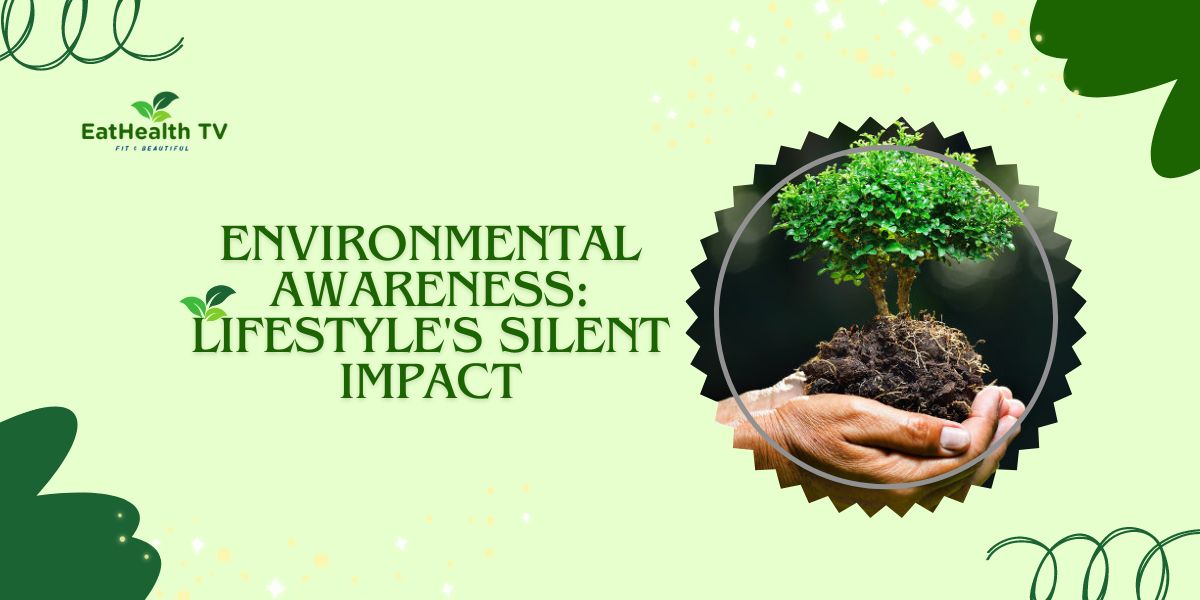Environmental Awareness: Lifestyle’s Silent Impact
Unveiling the Environmental Footprint of Everyday Actions

Environmental Awareness: Lifestyle’s Silent Impact
Environmental awareness is more than just a buzzword; it’s a crucial aspect of our collective responsibility towards the planet. From the products we consume to the habits we cultivate, our lifestyles exert a significant, albeit often silent, impact on the environment. In this article, we delve into the various facets of environmental awareness, exploring how individual choices shape the health of our planet. Whether you’re a high school student beginning to grasp the complexities of environmental issues or an expert seeking deeper insights, understanding the silent impact of lifestyle choices is essential for fostering a sustainable future.
Understanding Environmental Awareness:
At its core, environmental awareness encompasses an understanding of the intricate relationships between human actions and the natural world. It involves recognizing the interconnectedness of ecosystems, the finite nature of resources, and the consequences of human activities on environmental health. Environmental awareness goes beyond mere acknowledgment; it drives individuals to make informed choices that minimize harm to the planet and promote ecological sustainability.
Factors Influencing Environmental Awareness:
- Education: Education plays a pivotal role in shaping environmental awareness. Whether through formal curriculum in schools or informal learning experiences, education equips individuals with the knowledge and critical thinking skills necessary to understand environmental issues and their implications.
- Media and Communication: Media channels, including news outlets, social media platforms, and documentaries, serve as powerful tools for raising environmental awareness. Through compelling narratives, visual imagery, and factual reporting, media influences public perception of environmental issues and fosters dialogue on sustainability.
- Personal Experience: Personal experiences, such as witnessing environmental degradation firsthand or participating in conservation efforts, can profoundly impact an individual’s environmental awareness. These experiences evoke emotional responses and motivate action towards protecting the environment.
- Cultural and Societal Norms: Cultural beliefs, societal values, and norms shape attitudes towards the environment and influence behaviors related to consumption, waste management, and resource conservation. Cultivating a culture of environmental stewardship is essential for fostering widespread environmental awareness. Just as we know Eco-Friendly Beauty: Assessing the Environmental Impact
The Silent Impact of Lifestyle Choices:
- Consumption Patterns: The products we purchase and consume have far-reaching environmental implications. From the food we eat to the clothes we wear, every purchase contributes to resource extraction, energy consumption, and waste generation. Adopting mindful consumption habits, such as choosing locally sourced, organic products and prioritizing durable goods over disposable items, can reduce the environmental footprint of our lifestyles.
- Energy Usage: Energy consumption is a significant contributor to greenhouse gas emissions and climate change. Our reliance on fossil fuels for electricity, heating, transportation, and industrial processes perpetuates environmental degradation and exacerbates global warming. Transitioning to renewable energy sources, improving energy efficiency, and embracing sustainable transportation options are key strategies for mitigating the environmental impact of energy usage.
- Waste Generation: The disposal of waste, particularly non-biodegradable materials such as plastic, poses a significant threat to environmental health. Landfills overflow with discarded items, polluting soil, water, and air, while plastic waste accumulates in oceans, harming marine life and ecosystems. Adopting a zero-waste mindset, practicing recycling and composting, and reducing single-use plastic consumption are effective ways to minimize waste generation and protect the environment.
- Transportation Choices: The mode of transportation we choose affects air quality, carbon emissions, and traffic congestion. Gasoline-powered vehicles contribute to air pollution and greenhouse gas emissions, while public transportation, cycling, and walking offer sustainable alternatives. Transitioning to electric vehicles, carpooling, and advocating for investment in public transit infrastructure can reduce the environmental impact of transportation.
- Water Usage: Water is a precious resource essential for life, yet excessive consumption and pollution threaten its availability and quality. Practices such as overwatering lawns, polluting waterways with chemicals, and inefficient irrigation contribute to water scarcity and ecosystem degradation. Adopting water-saving technologies, conserving water at home and in agricultural practices, and protecting freshwater sources are vital for ensuring sustainable water management.
Promoting Environmental Awareness:
- Education and Outreach: Educating communities about environmental issues, sustainable practices, and the importance of conservation is essential for promoting environmental awareness. Schools, universities, non-profit organizations, and government agencies play key roles in providing environmental education and outreach initiatives.
- Policy and Regulation: Governments have a crucial role in enacting policies and regulations that promote environmental protection and sustainability. Legislation addressing pollution, resource management, renewable energy, and conservation efforts can incentivize environmentally responsible behaviors and industries.
- Corporate Responsibility: Corporations and businesses have a responsibility to minimize their environmental impact and adopt sustainable practices throughout their operations. Embracing eco-friendly technologies, reducing emissions, and implementing corporate social responsibility initiatives demonstrate a commitment to environmental stewardship.
- Community Engagement: Engaging communities in environmental initiatives fosters a sense of collective responsibility and empowerment. Community-led conservation projects, clean-up efforts, and sustainable development initiatives enable individuals to contribute positively to environmental preservation and resilience.
Conclusion:
Environmental awareness is the foundation of a sustainable future, and individual lifestyle choices play a pivotal role in shaping the health of our planet. By understanding the silent impact of our actions and adopting environmentally responsible behaviors, we can mitigate environmental degradation, preserve natural resources, and safeguard the well-being of present and future generations. Whether you’re a student, an expert, or anyone in between, cultivating environmental awareness is essential for creating a more resilient and sustainable world. Let’s embrace the challenge and opportunity to make a positive difference for our planet.




